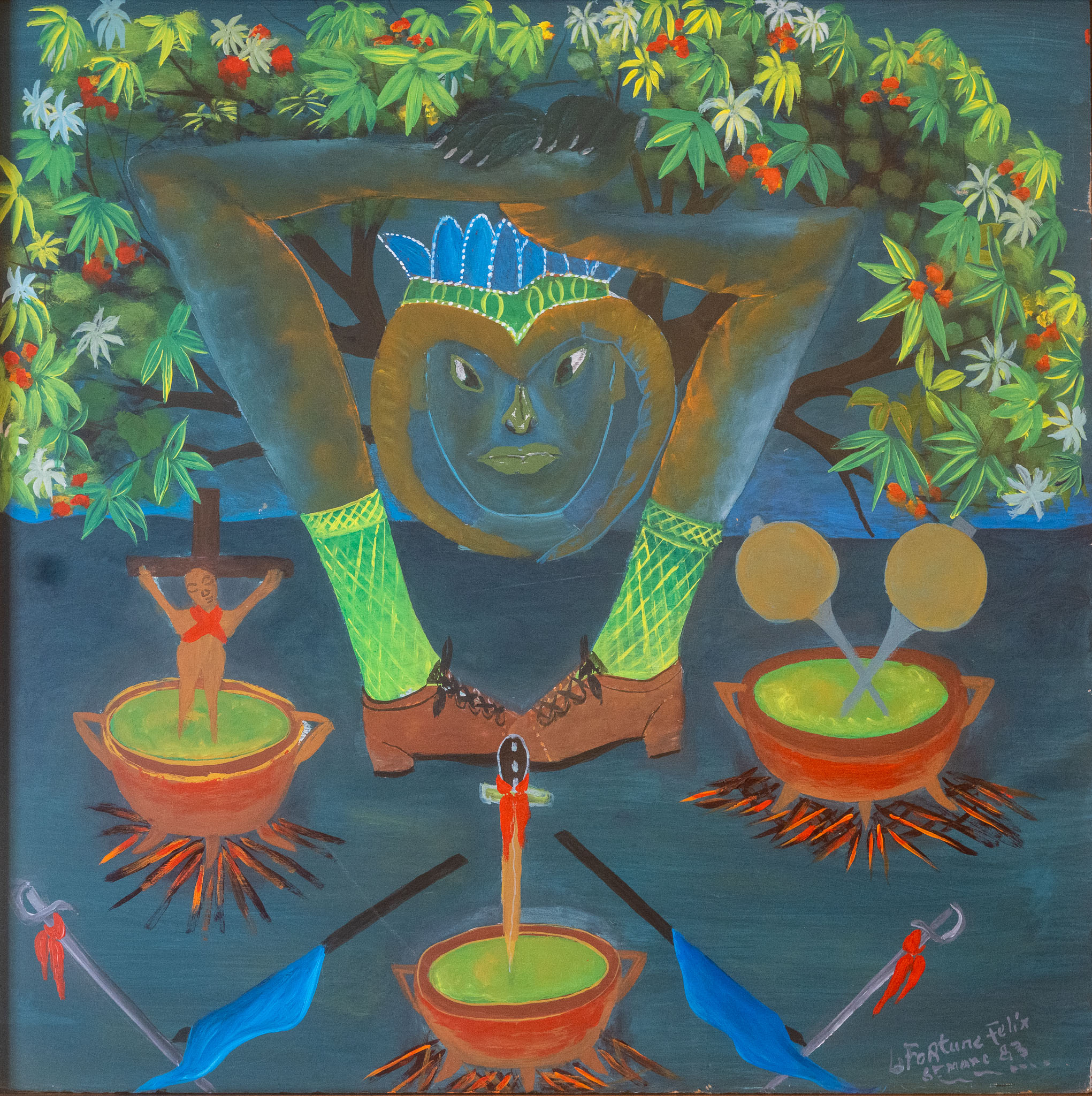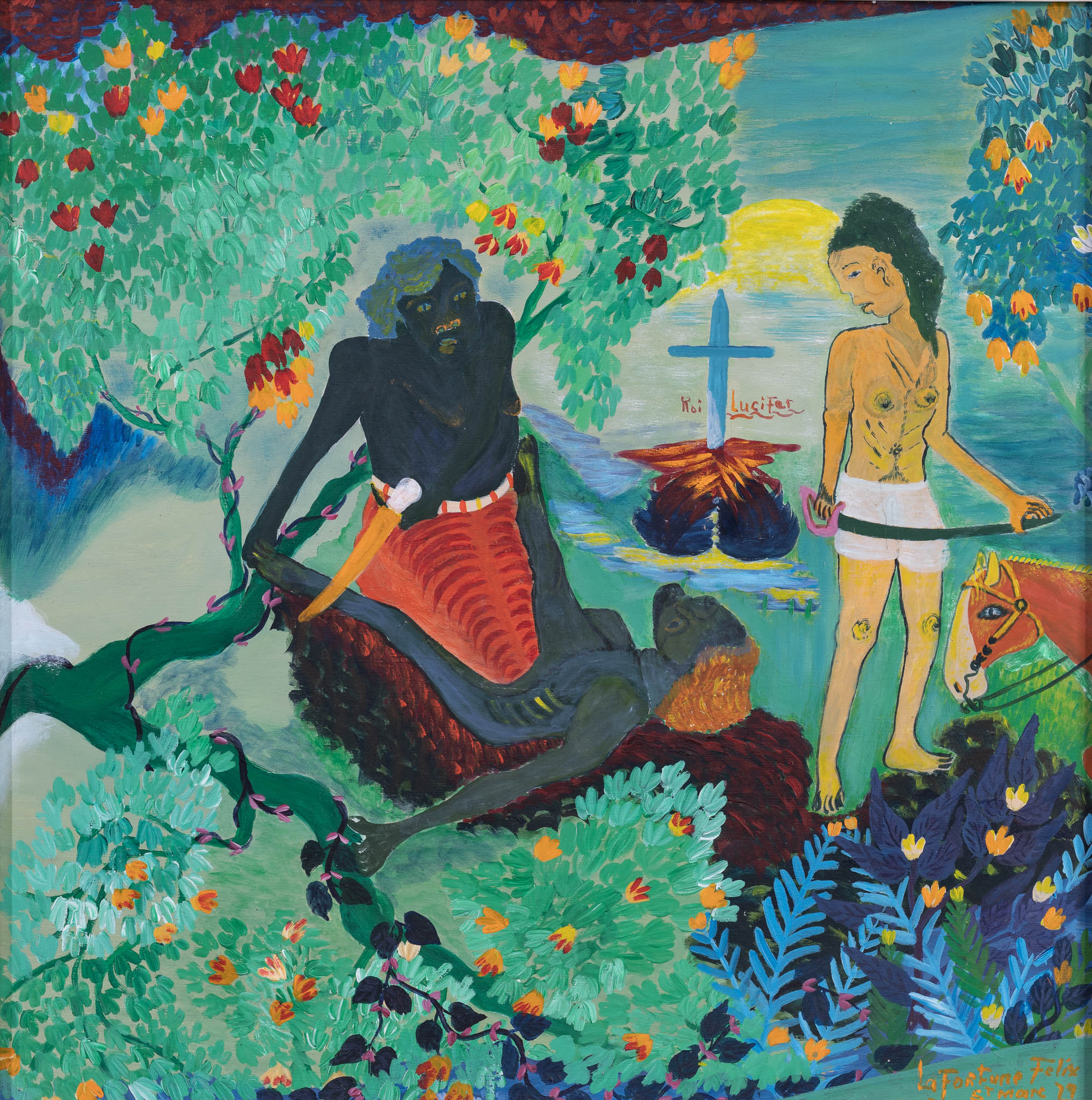
Lafortune Felix in his studio
Memory of Lafortune Félix by Gerard Alexis
In 1972 began the public career of Lafortune Félix,
anonymous artist who decorated the walls of his temple in the Saint-Marc
region. It was Pierre Monosiet, then director and curator at the Musée
d'art haïtien du Collège Saint-Pierre, who discovered it. Pierre was
rarely wrong. Lafortune Félix's success is once again proof of
this. What made this character interesting? For me who met him at the
very beginning of his career, what struck me at first sight was his
modesty. He was surprised to know that what he had done was
beautiful. He didn't know he was an artist. What he painted on the
walls of his temple was for him a way of participating in the cult of the lwa
he served. It was not at all a question of making a purely decorative work
associated with the sole aesthetic enjoyment of its author or of an
audience.
I would not like to do Selden Rodman and go back to the
Italian Trecento but, in truth, Laforture Félix looked like Giotto during the
latter's realization of the frescoes of the Basilica of St Francis in
Assisi. Indeed, like Giotto, Lafortune Félix painted his murals without
any pretension, without knowing that he was going to become a renowned artist
and thus take over from Hector Hyppolite, the greatest initiator of a new
voodoo iconography. However, Lafortune Félix should not be considered an
avatar of Hyppolite. He differs from the master in many ways. It must
be said that Lafortune was a houngan while Hyppolite was not one, in any
case according to the words of his friend and son-in-law Rigaud
Benoît. This would perhaps explain the fact that the production of
Lafortune Félix is exclusively devoted to his religion, while Hyppolite also
produced a whole set of images representing landscapes and genre scenes often
centered on women. That said, he was much more daring in color than the
elder he most likely did not know.
Lafortune Félix was born in 1933 at Pont Sondé, Hyppolite
died in 1948 in Port-au-Prince. On the other hand, like Hyppolite,
Lafortune Félix had an innate sense of composition. If we ignore the
subject of some of his works, Lafortune Félix, although self-taught, approached
the composition in a scholarly manner. He was surely guided by a desire to
make his image intelligible, which is precisely the purpose of the
composition. The first choice he made was that of a square
support. All the elements that make up his images: lines and shapes have
been organized according to the edges of the support. This organization is
made according to the circle or the triangle, two geometric figures which, by
their symmetry, make it possible to highlight the main character: the divinity,
rendered by a human figure. The divinity being source of balance by its
situation on the central axis, the artist will distribute the forms and the
values on both sides of this axis so as to translate an image through the
divine order. You could say that Lafortune Félix was an arbitrary
colorist. Didn't someone say that only the ignorant eye assigns a specific
and unchangeable color to each object. Lafortune Félix thought
so. Also, he only used color for his expressive force. In his work,
landscape and nature are always incidental and he gives them the colors he
considers covenable. Far from wanting to objectify the subjective, he
wanted to subjectify the objective. Its subject is not sought in the
outside world but rather in an inner world. Thus, feelings and ideas have
always been the starting point of his art. The iconography of Lafortune
Félix is therefore necessarily very personal. Failure to take into
account the artist's approach to the work in its form makes it difficult, if
not impossible, to understand. This was confessed by Jean Marie Drot,
writer and filmmaker who accompanied André Malraux in Haiti and who was
passionate about Haitian painting. "I admit," he said, to
be unable to decipher the works of Lafortune Félix from which I can only derive
a purely aesthetic, but immense pleasure ”. Lafortune Félix is dead,
Haiti has lost one of its great painters. (Gerald Alexis).

Untitled, 1982
View
Untitled, 1984
View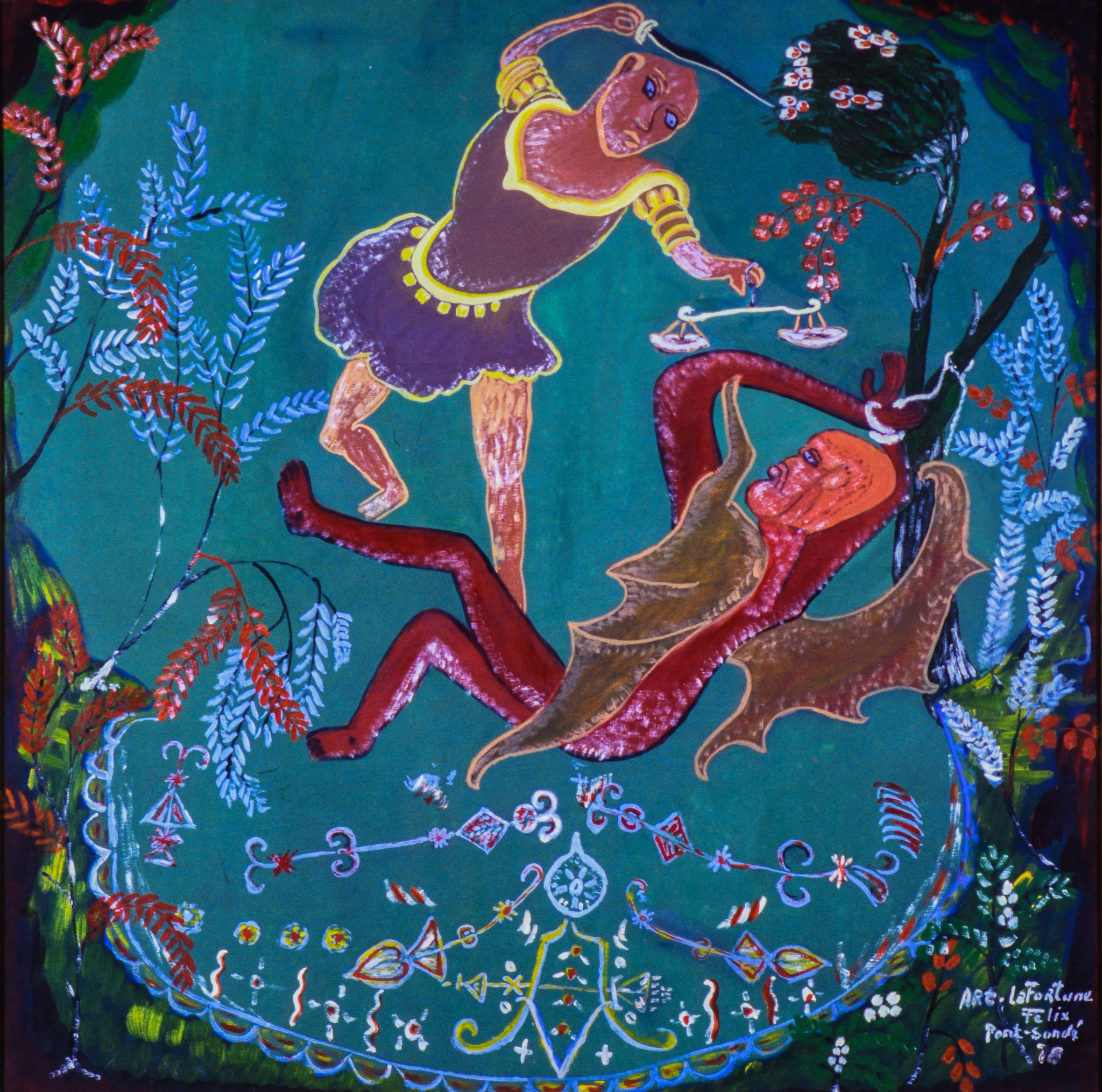
Untitled, 1978
View
Erzulie Freda, 1978
View
Vodou Symbols, 1978-80
View
Marie, 1989
View
Houlement au Molado, 1994
View
Cimetaire Maitre, 1987
View
Untitled
View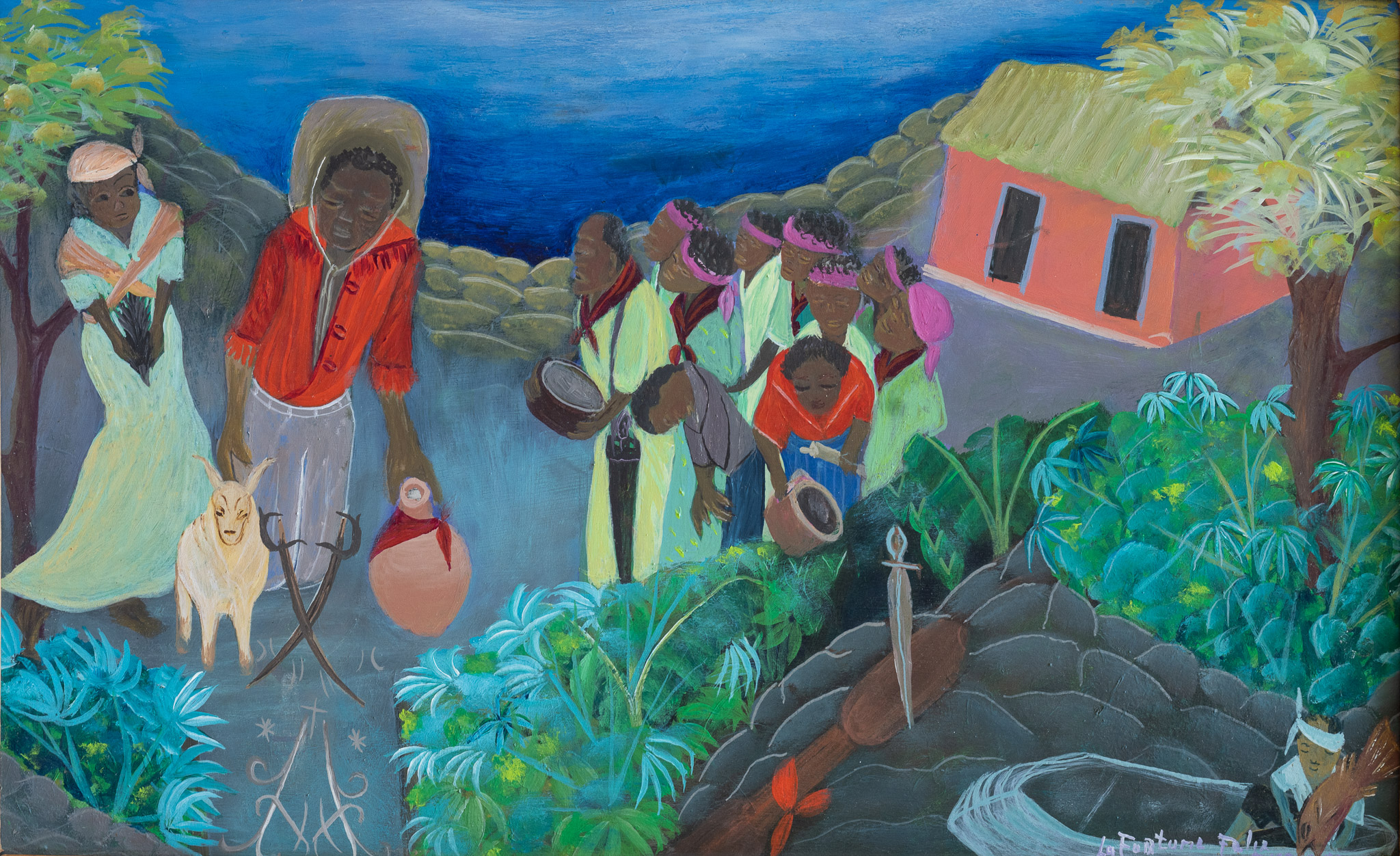
Ceremony for Agwe, 1981
View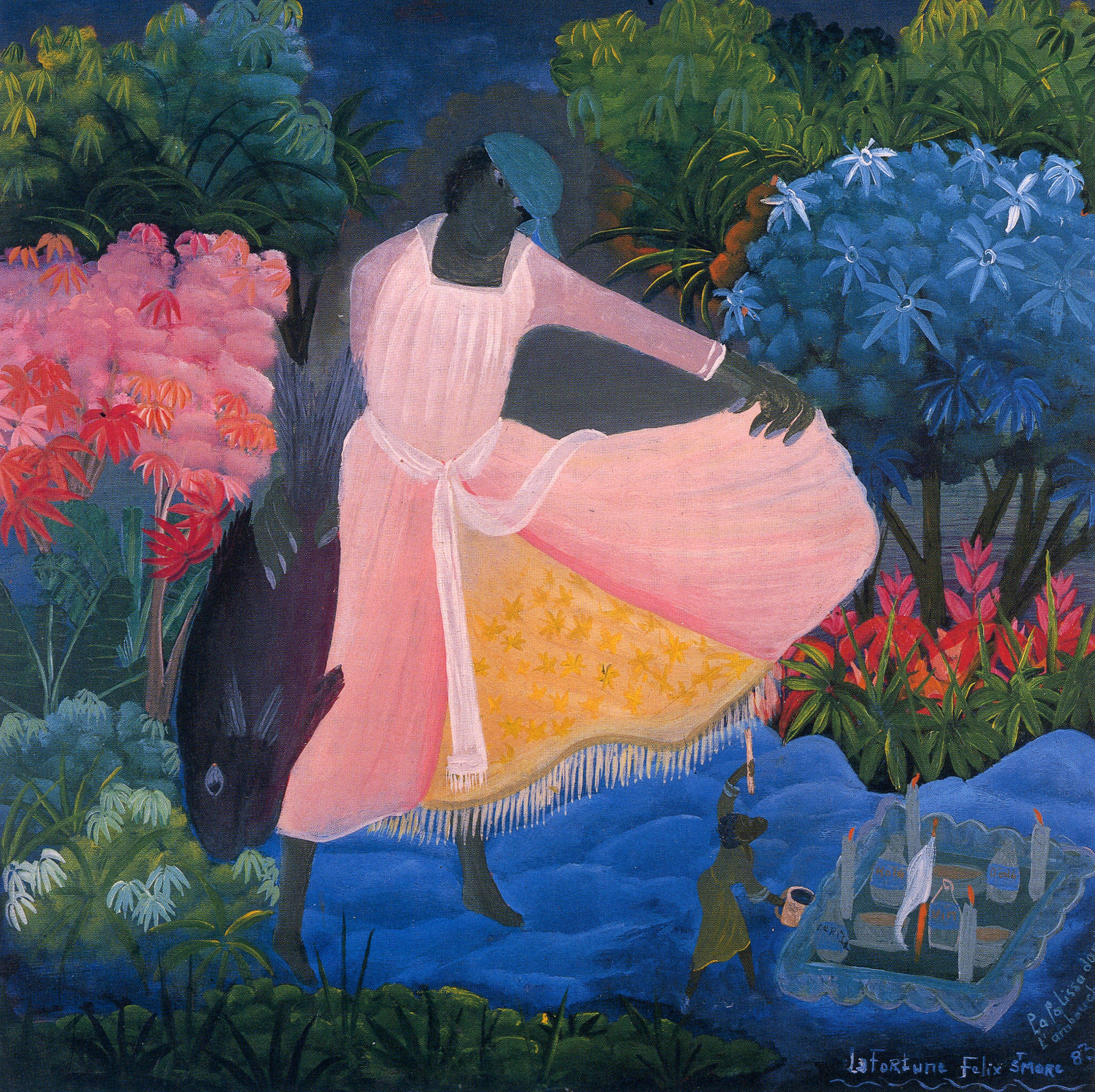
Mambo with Flowers and Sacramental Offerings, 1983
View
Ayizan Wedo, 1989
View
Fallen Figure On Street, 1978-80
View
Untitled, 1984
View


